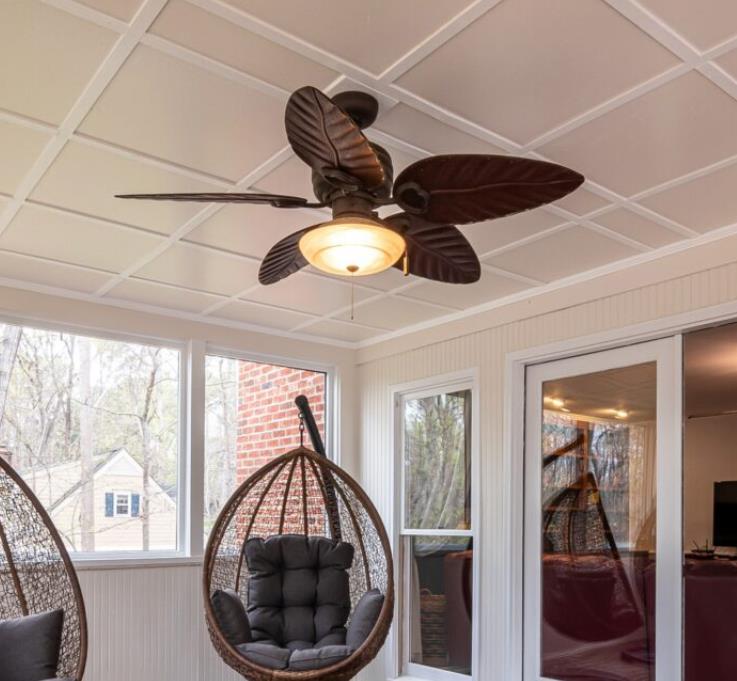In compact living areas, every inch of space matters. Low-profile ceiling fans offer an elegant solution for rooms with limited ceiling height, providing both illumination and air circulation without compromising on style or functionality. These flush-mount or hugger fans are designed to sit close to the ceiling, making them ideal for spaces with ceilings under 8 feet tall.
- Compact design suitable for ceilings under 8 feet
- Direct mounting to the ceiling without a downrod
- Available in various sizes, typically ranging from 30 to 52 inches
- Often include integrated lighting fixtures
- Many models offer remote control operation
Understanding Low-Profile Ceiling Fans
Low-profile ceiling fans, also known as flush-mount or hugger fans, are specifically designed for rooms with low ceilings. Unlike traditional ceiling fans that hang from a downrod, these fans mount directly to the ceiling, minimizing the distance between the ceiling and the fan blades. This design not only saves space but also ensures safety in rooms where a standard fan might hang too low.Key Features of Low-Profile Fans:
Top Low-Profile Ceiling Fan Picks
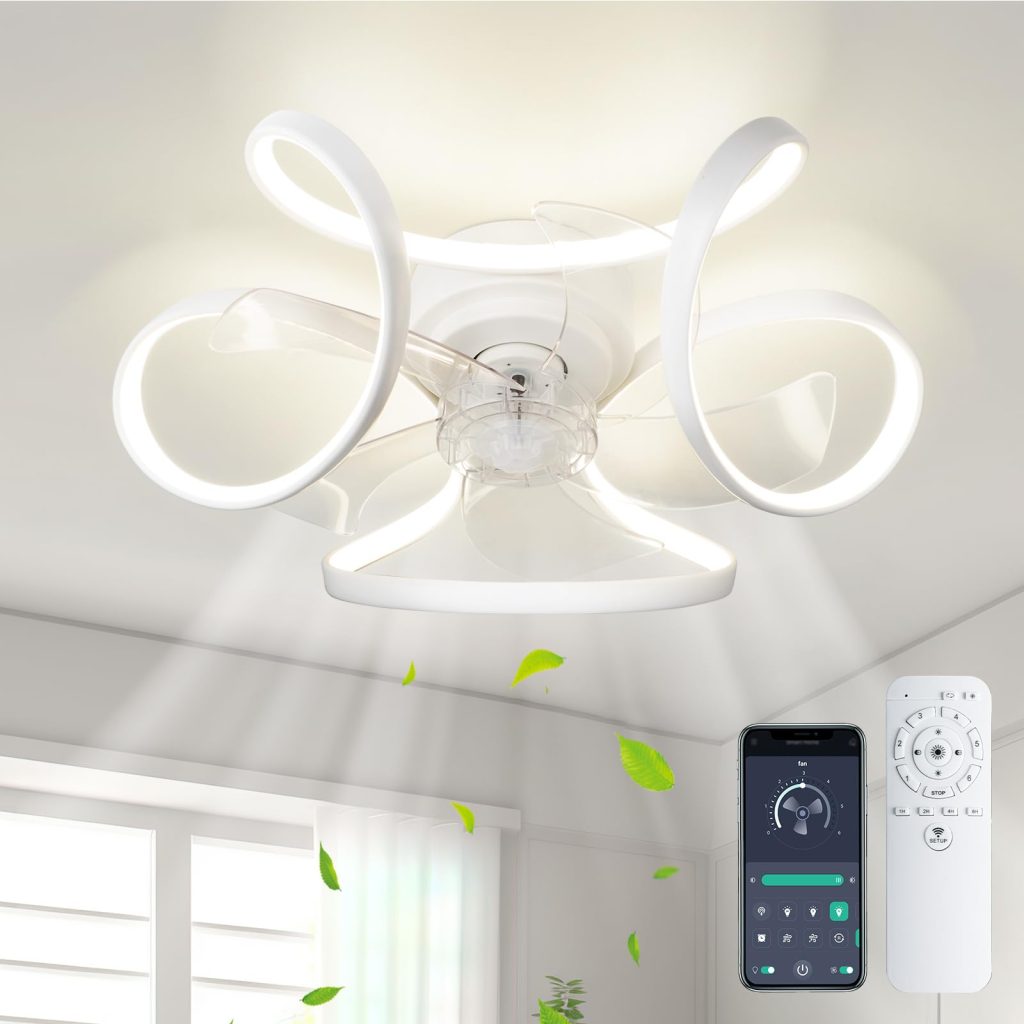
1. Hunter Dempsey Low Profile with Light and Remote Control
The Hunter Dempsey is available in both 44-inch and 52-inch models, making it versatile for different room sizes. It features:
- Integrated LED light with dimmable capability
- Reversible motor for year-round use
- Whisper Wind motor for quiet operation
- SureSpeed technology for improved air circulation
2. Amico 42-inch Low Profile Ceiling Fan
This affordable option offers:
- Three color temperature settings for the integrated light
- Six speed settings
- Reversible blades for different aesthetics
- Indoor/outdoor functionality
3. VOLISUN 19.7-inch Fandelier
For ultra-small spaces or a modern look, the VOLISUN fandelier provides:
- Bladeless design for a sleek appearance
- Adjustable color temperature (3000K-6500K)
- Dimmable LED light
- Smart remote control operation
4. Minka-Aire F565-BN Mesa 52-inch Flush Mount
This larger option is perfect for bigger rooms with low ceilings:
- Brushed nickel finish for a contemporary look
- Three-blade design for efficient air movement
- Optional light kit available (sold separately)
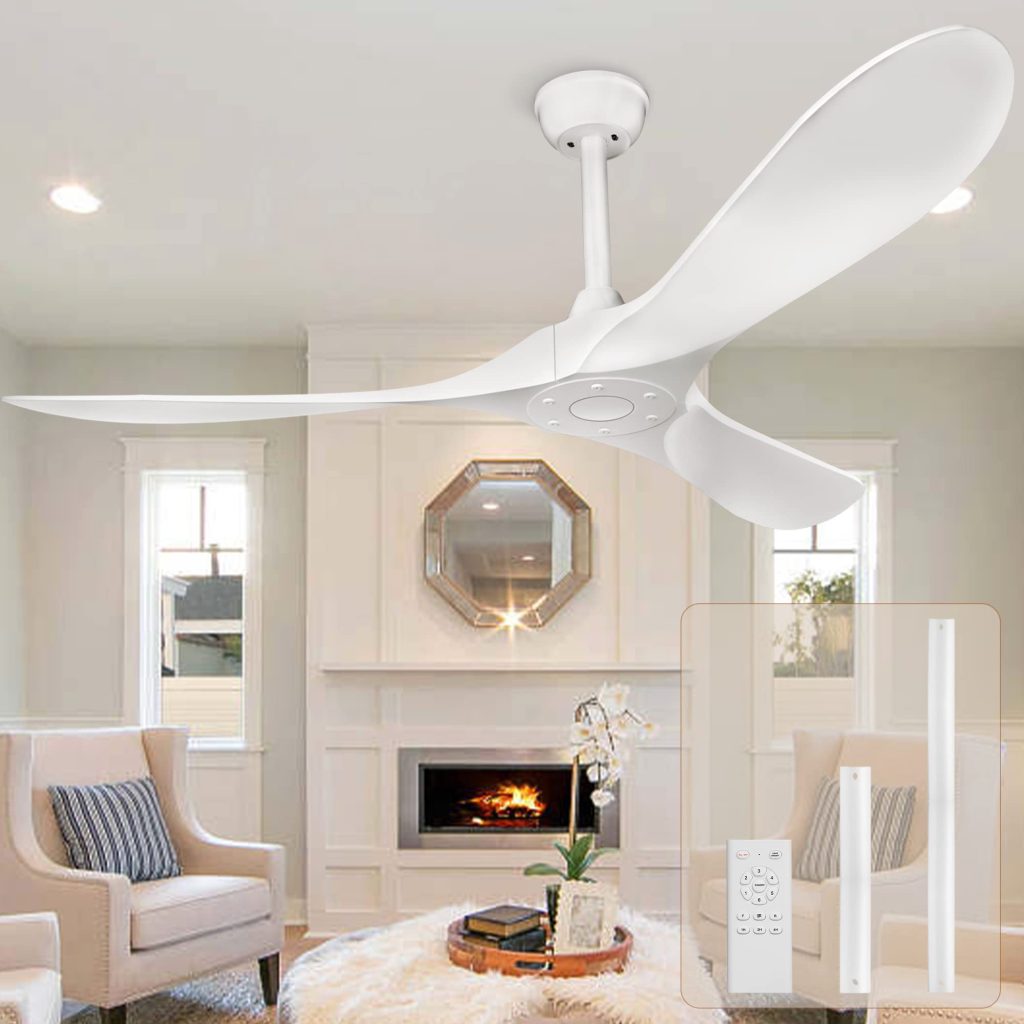

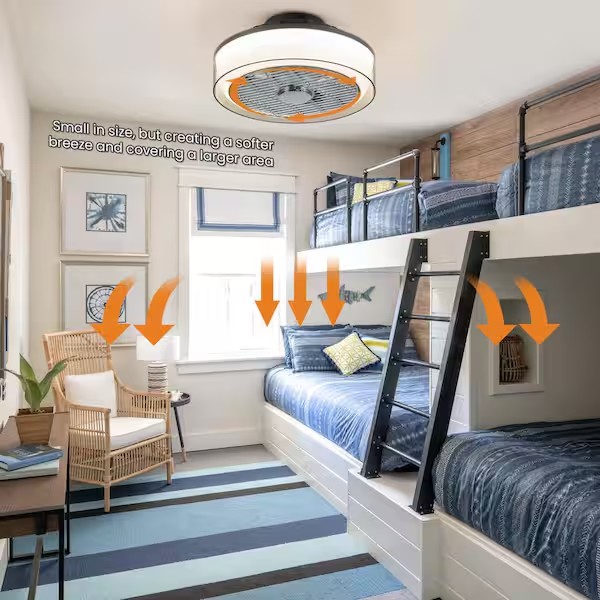
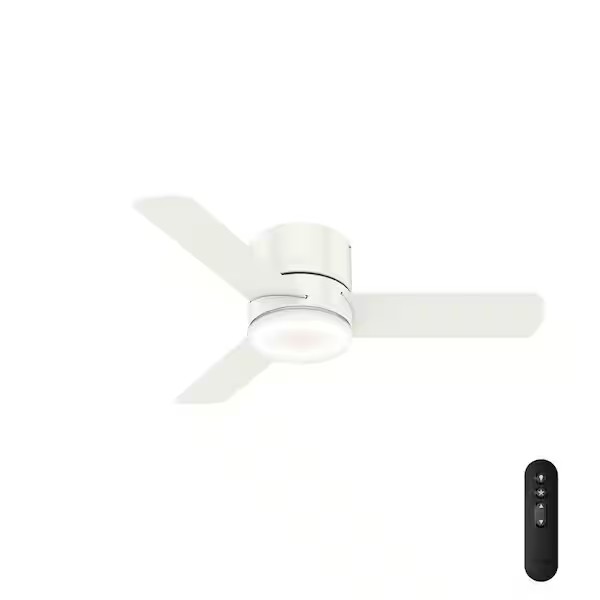
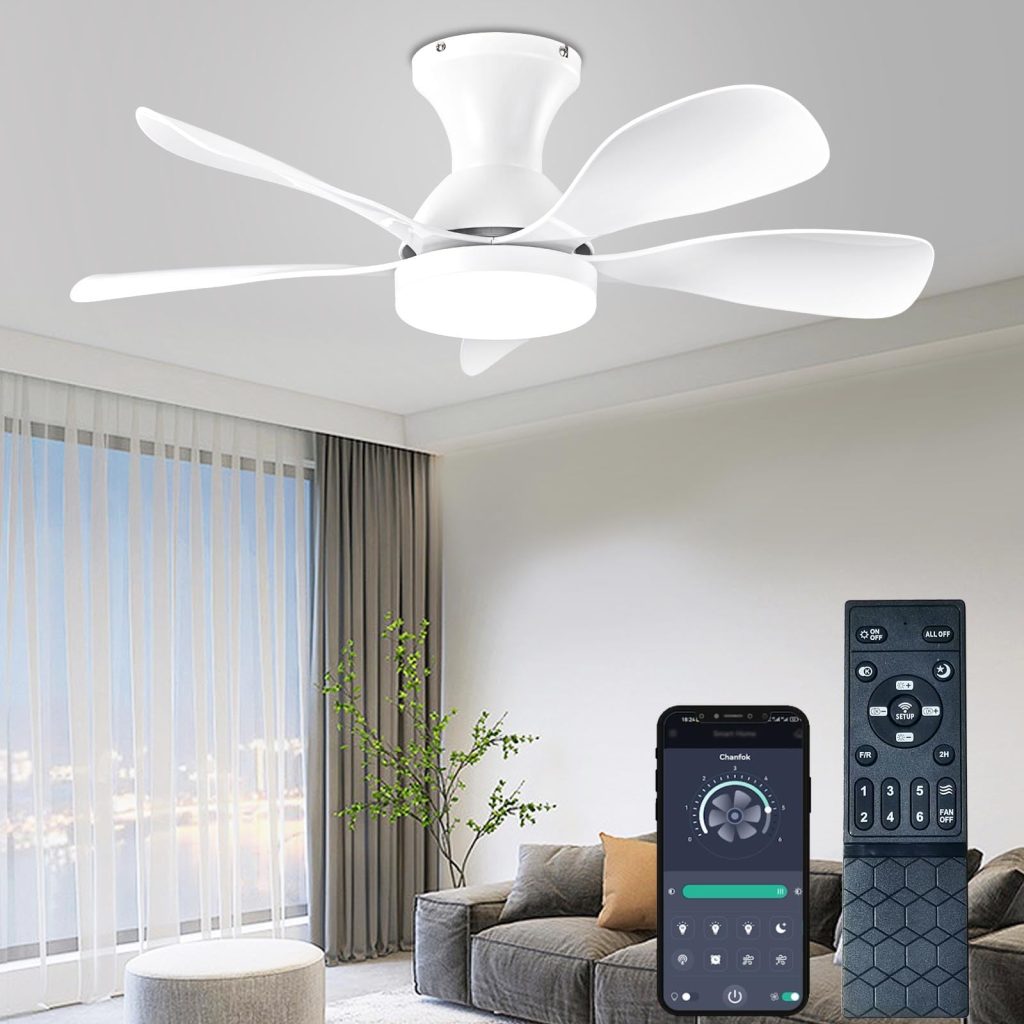
However, it’s important to note that low-profile fans may have some limitations in terms of airflow compared to standard ceiling fans:
- Reduced air circulation: Due to their closeness to the ceiling, low-profile fans have less room for air to be circulated above the blades. This can result in somewhat less airflow compared to similar-sized standard fans.
- Size considerations: To ensure effective air circulation in small rooms, it’s crucial to choose an appropriately sized fan. A fan that’s too small for the space won’t circulate air effectively throughout the room.
To maximize the airflow benefits of a low-profile fan in a small room:
- Choose the right size fan for your room dimensions.
- Ensure proper installation with adequate clearance from walls and other objects.
- Use the fan in conjunction with other cooling methods, such as air conditioning, for optimal comfort.
- Adjust the fan’s direction seasonally (counterclockwise in summer for a cooling downdraft, clockwise in winter to circulate warm air).
While low-profile ceiling fans may not move as much air as their standard counterparts, they still offer significant airflow improvements for small rooms with low ceilings, where traditional fans might not be suitable.
How do low-profile ceiling fans improve airflow in small rooms
Low-profile ceiling fans can improve airflow in small rooms, but they do have some limitations compared to standard ceiling fans. Here’s how they function and benefit airflow in compact spaces:
- Space-efficient design: Low-profile or flush-mount fans are designed to sit close to the ceiling, making them ideal for rooms with low ceilings (typically under 8 feet). This allows for air circulation in spaces where a standard ceiling fan with a downrod would hang too low.
- Targeted airflow: Despite their compact design, low-profile fans can still create a noticeable cooling effect through the wind chill phenomenon. They circulate air within the room, which can make it feel up to 7 degrees cooler.
- Blade design optimization: Many low-profile fans feature specially designed blades to maximize airflow efficiency. For example, some models use contoured, aerodynamic blade designs that push air more efficiently compared to standard flat blades.
- Motor performance: Quality low-profile fans often incorporate powerful, optimized motors to generate sufficient air movement despite their proximity to the ceiling.
- Adjustable settings: Many low-profile fans offer multiple speed settings and reversible motors, allowing users to customize airflow based on their needs.
Choosing the Right Low-Profile Fan
When selecting a low-profile ceiling fan for your small space, consider the following factors:Room Size: Match the fan size to your room dimensions. As a general rule:
- Rooms up to 75 sq ft: 29-36 inch fan
- Rooms 76-144 sq ft: 36-42 inch fan
- Rooms 144-225 sq ft: 44-50 inch fan
- Rooms 225-400 sq ft: 50-54 inch fan
Ceiling Height: Ensure there’s at least 7 feet of clearance between the floor and the bottom of the fan blades.Lighting Needs: If your room lacks overhead lighting, choose a fan with an integrated light fixture.Style: Select a fan that complements your existing décor. Options range from modern and minimalist to traditional and rustic.Features: Consider additional features like remote controls, reversible motors, and smart home compatibility.
Installation Tips
Installing a low-profile ceiling fan can be a DIY project for those with basic electrical knowledge. However, if you’re unsure, it’s best to consult a professional. Here are some general installation tips:
- Turn off the power at the circuit breaker before beginning installation.
- Ensure the electrical box is rated to support a ceiling fan.
- Follow the manufacturer’s instructions carefully.
- Use a sturdy ladder and have someone assist you if possible.
- Test the fan at all speeds after installation to ensure proper balance and operation.
Maximizing Efficiency
To get the most out of your low-profile ceiling fan:
- Use the fan in conjunction with your air conditioning to improve energy efficiency.
- In summer, set the blades to rotate counterclockwise to create a cooling downdraft.
- In winter, reverse the blade direction to clockwise to circulate warm air without creating a draft.
- Clean the blades regularly to maintain optimal performance and prevent dust accumulation.
Conclusion
Low-profile ceiling fans offer an excellent solution for small spaces with low ceilings. They provide essential air circulation and often incorporate lighting, making them a versatile addition to any room. By considering factors such as room size, ceiling height, and personal style preferences, you can find the perfect low-profile fan to enhance both the comfort and aesthetics of your compact living space.Remember, whether you’re outfitting a cozy bedroom, a compact home office, or a snug living room, there’s a low-profile ceiling fan that can meet your needs without cramping your style. With the right choice, you can enjoy improved air circulation, energy efficiency, and ambient lighting, all while making the most of your limited ceiling height.

